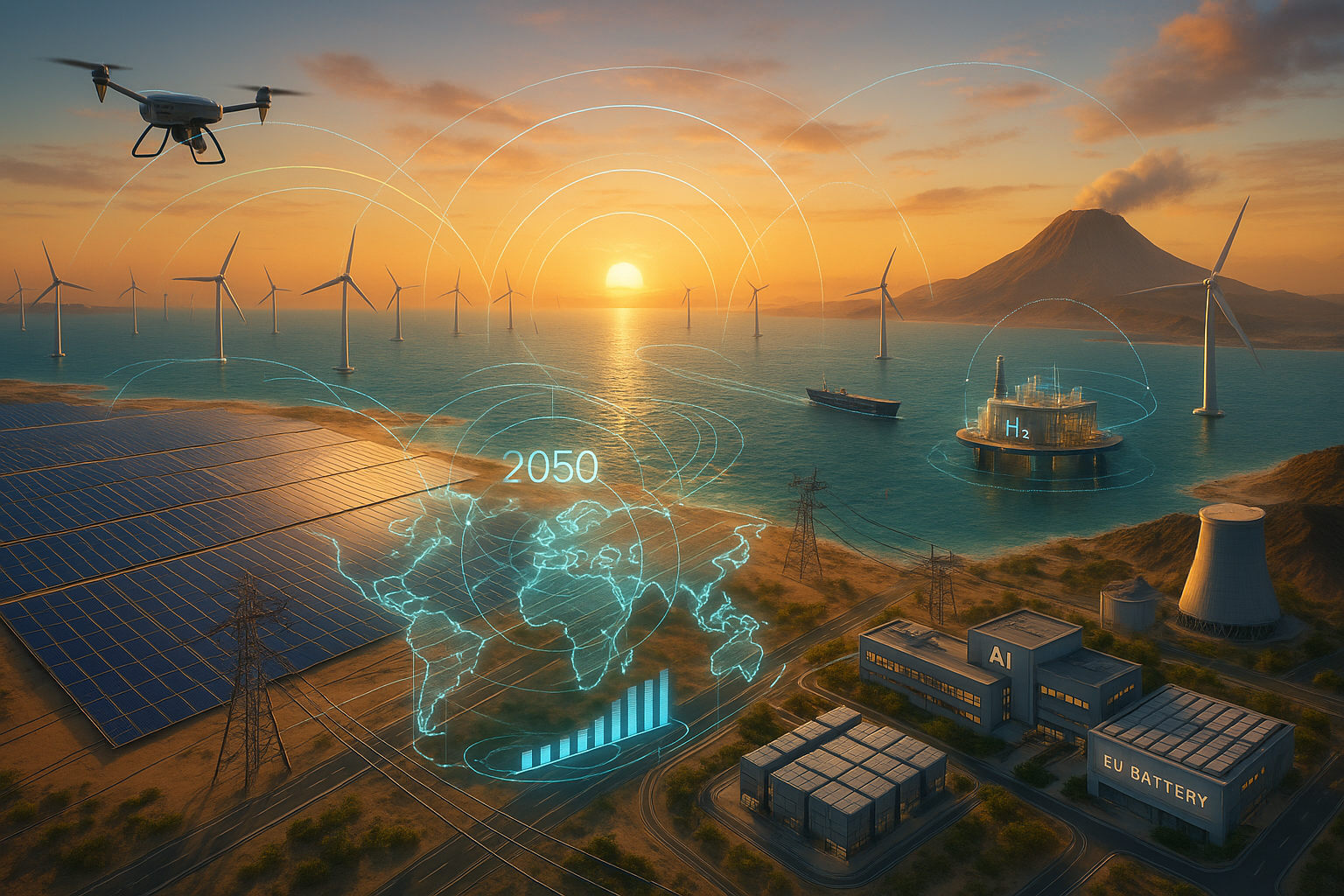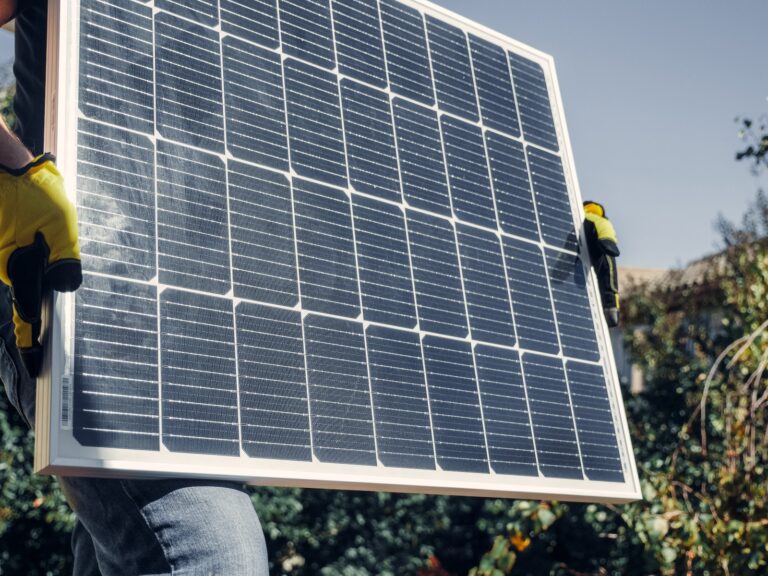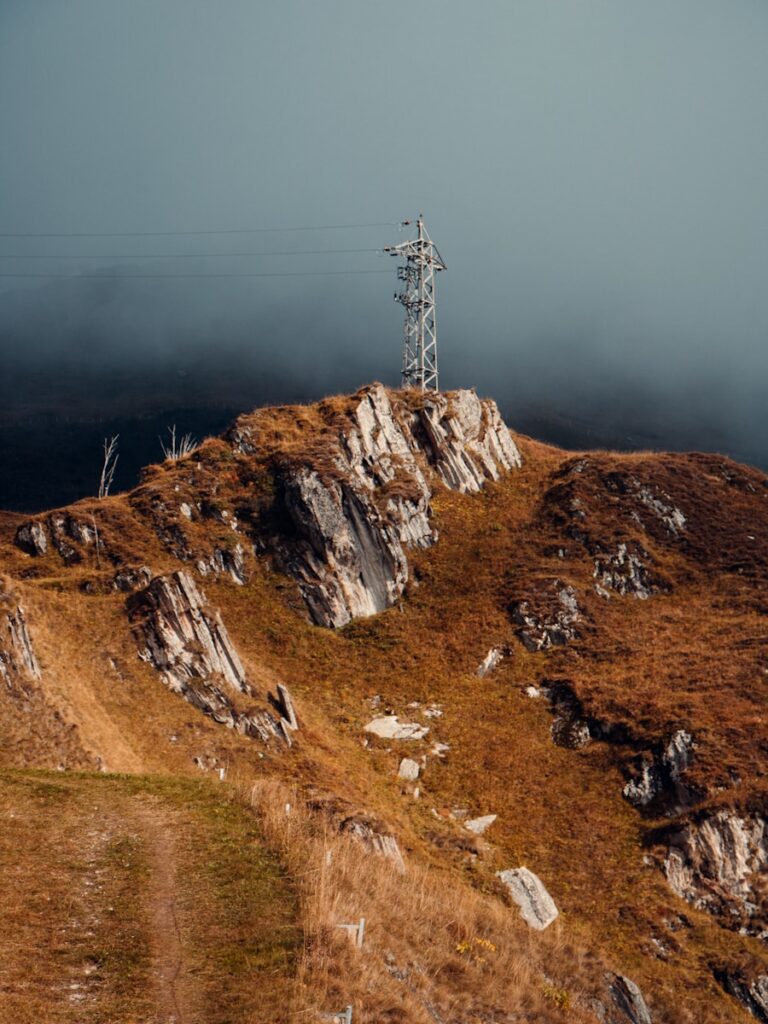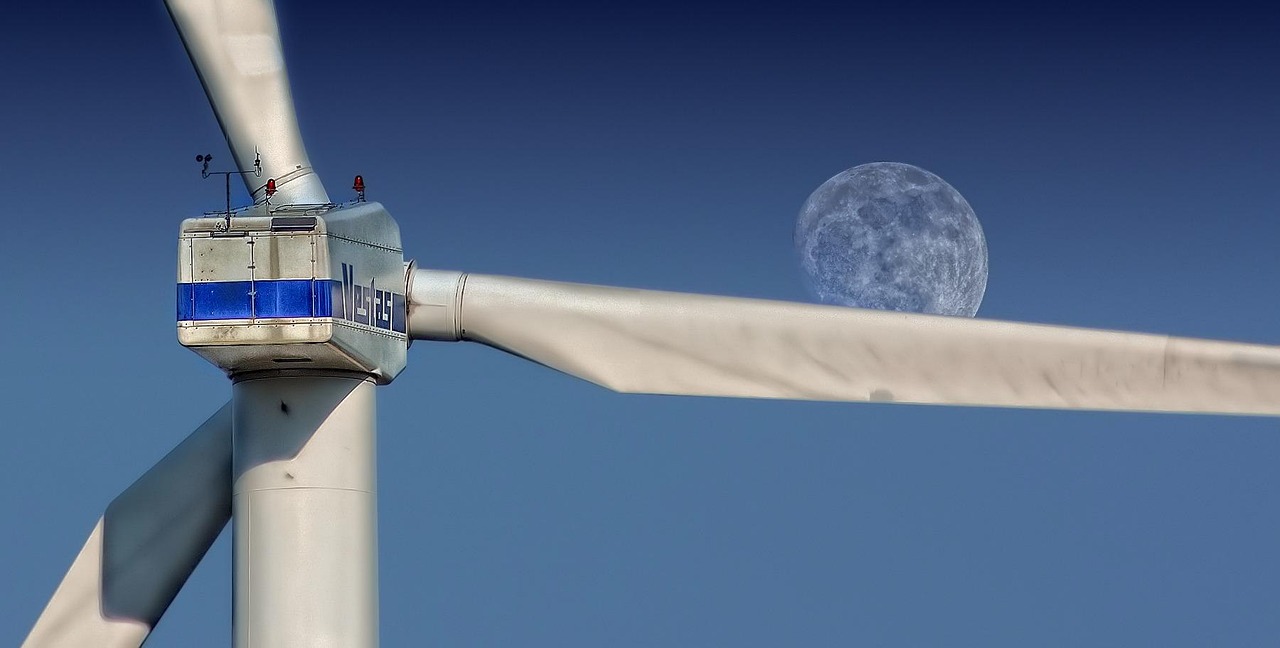Clean Energy: Top Renewable Energy Manufacturers Reshaping Global Power Systems
The renewable energy manufacturing sector has evolved from a niche, idealistic movement into the engineering backbone of the global energy transition. By mid-2025, these companies are no longer just suppliers of hardware—they are strategic partners in national decarbonization strategies, grid modernization, and industrial reindustrialization. As governments race to meet net-zero targets and energy security demands intensify, manufacturers of solar panels, wind turbines, battery systems, and next-generation clean technologies have become pivotal actors in reshaping the world’s power architecture.
Our comprehensive analysis identifies leading manufacturers driving this transformation across five continents, selected based on rigorous criteria: production capacity, market influence, funding milestones, technological differentiation, geopolitical relevance, and scalability. These firms span diversified energy giants, solar specialists, wind engineering leaders, storage innovators, and frontier technology disruptors—each playing a unique role in accelerating the shift from fossil fuels to a resilient, distributed, and intelligent clean energy ecosystem.
I. Global Titans: Diversified Powerhouses
These multinational corporations combine scale, financial strength, and strategic vision to lead the global energy transition. With portfolios spanning multiple technologies and geographies, they function as de facto infrastructure developers for national and regional grids.
1. NextEra Energy (USA)
- Portfolio: Over 33 GW of wind and solar capacity operational; largest renewable developer in North America.
- Innovation: Pioneering grid-scale battery storage integration, with over 5 GW/20 GWh of energy storage projects under development.
- Impact: Operates Florida Power & Light and NextEra Energy Resources, making it both a utility and a developer. Aims for carbon neutrality by 2045, well ahead of U.S. federal targets.
- Market Position: Market cap exceeds $150B, reflecting investor confidence in its long-term clean energy roadmap.
2. Brookfield Renewable Partners (Canada)
- Assets: 21 GW of operational capacity, primarily hydroelectric, complemented by growing solar and wind portfolios.
- Expansion Pipeline: Aggressively developing 37.9 GW of solar and 9.9 GW of wind, positioning itself as a dominant player in emerging markets.
- Strategy: Leverages $1.2 billion in 2024 revenue and access to Brookfield Asset Management’s $800B+ capital base to acquire distressed or underdeveloped projects globally.
- Geographic Reach: Active in North and South America, Europe, India, and Australia.
3. Iberdrola (Spain)
- Specialization: World leader in offshore wind, exemplified by the 714 MW East Anglia ONE project and upcoming Baltic Eagle (476 MW).
- Integration Model: Combines offshore wind with onshore transmission upgrades and co-located battery storage (e.g., 100 MW/200 MWh at East Anglia).
- Scope: Operates in 30+ countries, with €120B investment plan through 2030 focused on renewables, grids, and green hydrogen.
- Sustainability Leadership: First major utility to achieve ISO 14064-1 certification for carbon footprint.
4. Adani Green Energy (India)
- Scale: Developing the world’s largest solar park at Khavda, Gujarat—30 GW, equivalent to powering 18 million homes.
- Growth: Achieved 15% year-over-year revenue growth in Q1 2024, fueled by rapid deployment and government support.
- National Role: Central to India’s 500 GW non-fossil capacity by 2030 goal, representing nearly 10% of the national target.
- Challenges: Faces scrutiny over debt levels and environmental clearances, but remains a key enabler of India’s solar ambitions.
5. Enel Green Power (Italy)
- Footprint: Manages 64 GW across 1,300 plants in 16 countries, including pioneering geothermal operations in Kenya and the U.S..
- Storage Integration: Over 2.1 GW/8.4 GWh of battery storage integrated into renewable sites, enhancing dispatchability.
- Goal: Targeting full carbon neutrality by 2040, supported by €170B investment plan through 2030.
- Digital Transformation: Utilizes AI for predictive maintenance and output forecasting, reducing downtime by up to 30%.
II. Solar Specialists: From Silicon to Systems
Solar photovoltaics (PV) remain the fastest-deployed renewable technology globally, with module prices falling 90% since 2010. The following companies dominate the supply chain—from raw materials to rooftop installations.
Table: Leading Solar Manufacturers’ 2025 Capacity & Innovation
| Company | HQ | Key Strength | Capacity/Output |
|---|---|---|---|
| JinkoSolar | China | World’s largest PV module producer | >75 GW annual module capacity |
| Canadian Solar | Canada | Integrated modules + storage solutions | 61 GW modules, 20 GWh storage systems |
| First Solar | USA | Thin-film CdTe technology, low LCOE | $1B revenue (Q2 2024), 40 GW backlog |
| LONGi Green Energy | China | Monocrystalline silicon wafer dominance | ¥17.8B revenue (H1 2024) |
| Qcells USA | USA | IRA-backed domestic manufacturing | 719 MW deployed in 2024 |
6. Daqo New Energy (China)
- Role: One of the world’s largest polysilicon producers, supplying 205,000 metric tons/year—enough for ~80 GW of PV modules.
- Vertical Integration: Supplies key Chinese manufacturers like LONGi and JinkoSolar, forming the foundation of the global solar supply chain.
- Sustainability Push: Investing in closed-loop recycling and low-carbon hydrogen reduction processes to reduce emissions intensity.
7. Sungrow Power Supply (China)
- Niche: Global leader in solar inverters, with CNY 20.9 billion ($2.9B) revenue in H1 2024.
- Market Share: Controls over 30% of global inverter shipments, particularly strong in utility-scale applications.
- R&D Focus: Developing AI-driven MPPT (Maximum Power Point Tracking) algorithms to optimize performance in partial shading and variable weather.
- Global Expansion: Projects in over 170 countries, including large-scale deployments in Saudi Arabia and Chile.
III. Wind Engineering Leaders
Wind power remains a cornerstone of deep decarbonization, especially offshore. These companies are pushing the boundaries of turbine size, efficiency, and adaptability.
8. Vestas Wind Systems (Denmark)
- Market Share: Holds over 15% of global installed wind capacity (181 GW), operating in 88 countries.
- R&D Focus: Developing turbines for low-wind regions (e.g., V150-4.2 MW) and emerging markets with grid instability.
- Growth: Reported 10% YoY revenue increase in 2024, driven by U.S. and Indian demand.
- Circularity: Launching blade recycling programs and designing turbines for disassembly.
9. GE Vernova (USA)
- Background: Spun off from General Electric in 2024 to focus exclusively on energy, including gas, wind, and hybrid systems.
- Portfolio: Offers Haliade-X offshore turbines (14–15 MW) and onshore Cypress platform, known for high efficiency in turbulent conditions.
- Revenue: Generated $8.9 billion in Q3 2024, despite persistent supply chain bottlenecks in rare earths and logistics.
- U.S. Reshoring: Expanding domestic nacelle and blade production to comply with IRA sourcing rules.
10. Ørsted (Denmark)
- Pioneering Achievement: Developed Hornsea 2 (1.3 GW), the world’s largest offshore wind farm at commissioning.
- Transformation Story: Once a fossil fuel company (DONG Oil & Gas), now 87% of EBITDA from renewables.
- Green Hydrogen Integration: Piloting Power-to-X projects using offshore wind to produce green hydrogen for industry and transport.
- Sustainability Benchmark: Committed to net-positive biodiversity impact by 2030 across all projects.
IV. Storage & Grid Innovators
Energy storage is the linchpin of a renewable-dominant grid. These companies are advancing technologies beyond lithium-ion, enabling longer duration, lower cost, and greater sustainability.
11. Powin Energy (USA)
- Technology: Modular, containerized lithium-iron-phosphate (LFP) battery systems with integrated Battery Management Systems (BMS).
- Funding: Secured $225 million from KKR and other institutional investors to scale U.S. manufacturing.
- Deployment: Over 3 GWh installed or contracted, including major projects in California and Texas.
12. Eos Energy Storage (USA)
- Breakthrough: Commercializing zinc-based aqueous hybrid flow batteries, safer and more sustainable than lithium.
- Advantages: Longer lifespan (30+ years), recyclable components, and non-flammable electrolyte.
- Scale: Backed by $400 million in DOE grants and private contracts, including a 100 MW/400 MWh project in New Jersey.
13. FlexGen Power Systems (USA)
- Software Focus: Proprietary Hydra™ energy management system (EMS) for hybrid plant optimization.
- Clients: Used by Duke Energy, NextEra, and U.S. Department of Defense for microgrid and utility-scale integration.
- Backing: Raised $175 million from Vitol, signaling oil major interest in grid flexibility.
14. Moment Energy (Canada)
- Sustainability Innovation: Repurposes used EV batteries (from Mercedes, Nissan) for stationary storage, achieving 80% capacity retention.
- Applications: Deployed in remote communities and commercial buildings across Canada and the U.S. Pacific Northwest.
- Funding: $41.5 million CAD in Series B, led by BDC Capital and Emissions Reduction Alberta.
15. Highview Power (UK)
- Technology: Liquid Air Energy Storage (LAES)—uses excess electricity to liquefy air, stored in tanks and expanded to generate power when needed.
- Scale: Developing 200 MW / 1.2 GWh facilities in the UK and U.S., capable of 8–12 hours of discharge.
- Advantage: No geographical constraints (unlike pumped hydro), scalable, and fully recyclable.
V. Emerging Technology Disruptors
These startups are redefining what’s possible in clean energy, exploring fusion, geothermal, ammonia, and thermal storage. Though not yet mass-market, their potential is transformative.
16. Amogy (USA)
- Innovation: Converts ammonia into hydrogen-free electricity using catalytic cracking, ideal for maritime and heavy transport.
- Milestones: Successfully powered a 30-foot tractor and a 300 kW drone; scaling to ship propulsion.
- Funding: $56 million, including support from Amazon’s Climate Pledge Fund and Saudi Aramco.
17. TAE Technologies (USA)
- Vision: Developing compact fusion reactors using hydrogen-boron fuel (p-B11), which produces no long-lived radioactive waste.
- Progress: Achieved stable plasma at 75 million degrees Celsius; aiming for net energy gain by 2026.
- Funding: $6.7 billion raised over two decades, one of the most funded private fusion ventures.
18. Commonwealth Fusion Systems (USA)
- Technology: MIT-spinoff using high-temperature superconducting magnets to shrink tokamak size.
- Milestone: Built SPARC, a demonstration reactor expected to achieve Q > 1 (net energy) by 2025.
- Support: $30 million from DOE’s Milestone Program and $2 billion from private investors including Bill Gates.
19. Rondo Energy (USA)
- Solution: Zero-carbon industrial heat batteries using resistive heating and insulation to store thermal energy at >1,500°C.
- Use Case: Replaces fossil-fueled boilers in cement, steel, and chemical plants.
- Efficiency: Delivers heat at <$20/MWh, competitive with natural gas in carbon-constrained markets.
20. XGS Energy (USA)
- Tech: Geothermal energy from low-grade heat sources (<150°C), using advanced binary cycle and AI-optimized drilling.
- Deployment: Pilot projects in Nevada and Utah; potential to unlock 1,000+ GW of untapped geothermal in the U.S. alone.
- Funding: $27 million in Series A, with DOE technical validation.
VI. Regional Champions
These companies are shaping energy access and innovation within specific regions, often addressing unique challenges like off-grid access or policy fragmentation.
21. ReNew Power (India)
- Portfolio: 13 GW of wind, solar, and hybrid assets, including the Bhadla Solar Park (2.2 GW).
- Innovation: Integrating AI-based forecasting and battery storage to stabilize India’s grid amid rising renewable penetration.
- ESG Focus: Committed to gender diversity, with 30% women in technical roles.
22. Sun King (Kenya)
- Mission: Expand energy access to off-grid populations in Africa via pay-as-you-go solar home systems.
- Scale: Over 3 million households served across Kenya, Nigeria, and Uganda.
- Funding: $77 million in debt and equity, including from Shell and CDC Group.
23. Enpal (Germany)
- Model: Digital-first provider of rooftop solar + storage leasing for homeowners.
- Growth: Installed over 100,000 systems; raised €1.8 billion to fund expansion into France and Italy.
- Tech Edge: Uses machine learning to optimize system sizing and financing.
24. Hydrostor (Canada)
- Technology: Advanced compressed air energy storage (A-CAES) using underwater balloons or lined caverns.
- Projects: 220 MW/1.7 GWh facility in Ontario; 500 MW/4 GWh in Australia under development.
- Funding: Over $2 billion secured, including from Australian Renewable Energy Agency (ARENA).
Industry Outlook: Convergence of Megatrends
The renewable manufacturing landscape is being reshaped by five converging megatrends:
1. AI-Driven Efficiency
- Data centers, projected to consume 75 GW by 2030, are using AI for real-time load balancing, renewable output forecasting, and autonomous grid control.
- Companies like Google and Microsoft are partnering with FlexGen and Enel to integrate AI into clean energy procurement.
2. Supply Chain Reshoring
- The U.S. Inflation Reduction Act (IRA) has triggered $71 billion in cleantech manufacturing investments in 2024 alone.
- Companies like Qcells, First Solar, and Powin are expanding U.S. factories to qualify for tax credits and reduce reliance on Asian imports.
3. Storage Breakthroughs
- Residential solar-storage attachment rates hit 25% in 2024, up 78% since 2023, driven by rising electricity prices and resilience concerns.
- Long-duration storage (LDES) is gaining traction, with Highview, Eos, and Rondo leading the charge.
4. Geopolitical Pressures
- Tariffs on Chinese solar modules and batteries have increased costs by 15–30%, disrupting project economics.
- However, they are accelerating Western manufacturing, with EU’s Net-Zero Industry Act and India’s Production-Linked Incentive (PLI) scheme fostering local capacity.
5. Carbon Markets & Monetization
- Renewable energy attributes (RECs) and carbon credits are becoming new revenue streams.
- Projects using Amogy’s ammonia tech or Moment’s recycled batteries can claim premium carbon offsets, improving ROI.
Insurance industry data reveals that 57% of renewable manufacturers cite risk engineering as a top barrier, particularly for novel technologies like LAES, fusion, and ammonia-power. Insurers like Lloyd’s and Munich Re are developing parametric policies and technology-specific underwriting models to close the gap.
Challenges Ahead
Despite momentum, significant hurdles remain:
- Grid Congestion:
- FERC reports over 1,300 GW of renewables awaiting interconnection in the U.S.—more than the entire current U.S. generation fleet.
- Queue reform and transmission expansion are urgently needed.
- Protectionism & Trade Barriers:
- Solar tariffs and local content requirements increase costs and delay projects.
- Risk of fragmented global markets undermining cost reductions.
- Technology Risks:
- Insurers classify fusion, advanced storage, and ammonia systems as “prototypical” with unproven reliability.
- Requires public-private de-risking mechanisms and pilot funding.
- Raw Material Constraints:
- Lithium, cobalt, and rare earths face supply chain volatility.
- Recycling and material substitution (e.g., sodium-ion, iron-air) are critical.
Manufacturing as the Climate Catalyst
The manufacturers profiled here represent the industrial metamorphosis powering the clean energy revolution. From Vestas’ turbines spinning across 88 countries to Amogy’s ammonia-powered ships, they are transforming abstract climate goals into tangible, deployable infrastructure.
Their success will determine whether the world can achieve 90% renewable electricity by 2050—a target now dependent not just on policy, but on manufacturing scale, technological maturity, and financial innovation.
As AI, electrolyzers, and long-duration storage mature, the ability to deliver 24/7 clean power—not just intermittent generation—will become the new benchmark. These companies are not merely suppliers; they are architects of the post-carbon economy.







